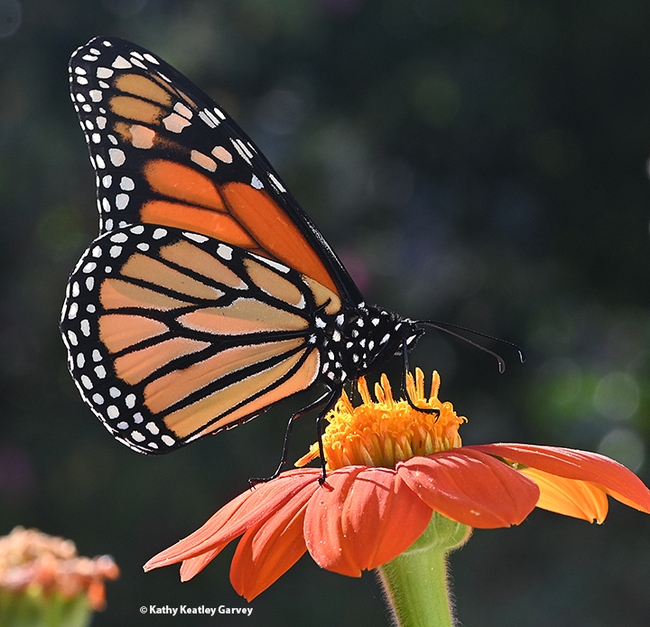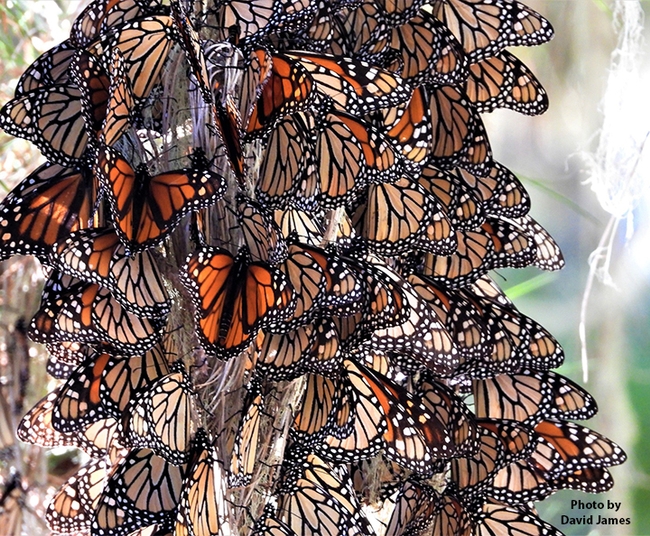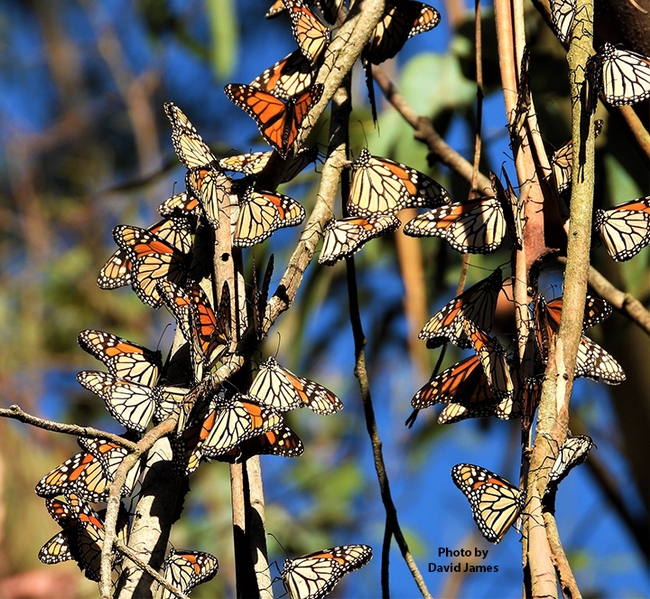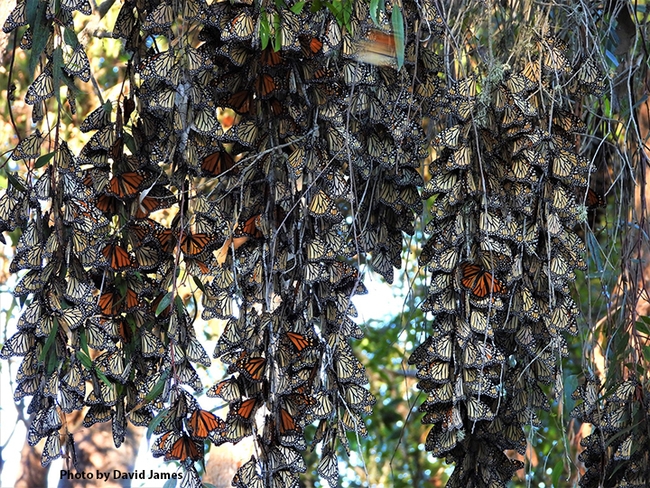
The Western monarch population at overwintering sites in California indicates a 2022 "great breeding season," says Washington State University entomologist David James, who researches migratory monarchs and spearheads a tagging program in the Pacific Northwest.
"After two thousand miles and eight days, I returned to Washington State after surveying Monarch populations at 24 coastal California overwintering sites stretching from Pismo Beach to Bolinas," he related in an email Sunday and earlier posted on his Facebook page, Monarch Butterflies in the Pacific Northwest.
"As detailed previously, I found three tagged Monarchs (Pismo Beach, Cambria, Santa Cruz) that originated in southern Oregon. I also located or learned of three additional tags in Santa Cruz that have not yet been viewed sufficiently well to get details of serial numbers. If you are visiting Lighthouse Field or Natural Bridges in Santa Cruz over the coming weeks, please watch for these!"
"Populations at the overwintering sites I visited ranged from 100 to 24,000 with sites around Pismo, Cayucos and Cambria having the largest numbers. In total, I saw an estimated 107,650 Monarchs at the 24 sites. Comparing my estimates with the Thanksgiving Counts (TGC) made at these sites in 2021 indicates an almost 80% increase. For example, for nine sites in San Luis Obispo County, I estimated a total of 92,810 butterflies last week, compared to 52,212 in the 2021 TGC. Similarly, in the Santa Cruz/San Francisco area my estimate of 34,310 butterflies at nine sites is almost double the 2021 TGC number for these sites (17,556)."
Pismo Beach, Cayucos and Cambria are all located in San Luis Obispo County, a county located along the state's central coast.
The WSU entomologist singled out for special mention the overwintering population in Cambria; longtime monarch advocate Paul Cherubini alerted him to the site. "This new site, which does not appear on the official list of overwintering sites, is home this November to 15,000 butterflies!" James noted.

"Regardless of the final numbers, there is little doubt that the western Monarch had a great breeding season in 2022."
Check out his spectacular images of Danaus plexippus.
2023 International Western Monarch Summit, Open to All
Meanwhile, enthusiasm is building for the 2023 International Western Monarch Summit, set Jan. 20-22 at Pismo Beach, San Luis Obispo. The three-day conference, sponsored by the Western Monarch Advocates (WMA), will include networking, field trips, and meals.
James, a WMA board member, will be among the keynote speakers from four countries. The event, open to all interested persons, is billed as "an exchange of ideas from across the Western States, Tribal Lands, Mexico, Canada and Australia-all with an interest in our western monarch population! Expand your knowledge and make connections with other Monarch enthusiasts, researchers, and conservation organizations."
As they point out, "our migrating Western Monarch Butterflies do not stop at state or international borders; nor should our efforts to restore them."
Yes, indeed. Monarchs know no borders and neither should we.
Attached Images:

Overwintering monarchs in Cambria, San Luis Obispo County. This site does not appear on the official list of California's overwintering sites, says WSU entomologist David James. It was home in November to 15,000 butterflies. (Photo by David James, Washington State University entomologist)

A cluster of monarchs at an overwintering site in Bolinas, Calif. (Photo by David James, Washington State University entomologist)

Monarchs clustering at an overwintering site in Pismo Beach, San Luis Obispo County. (Photo by David James, Washington State University entomologist)